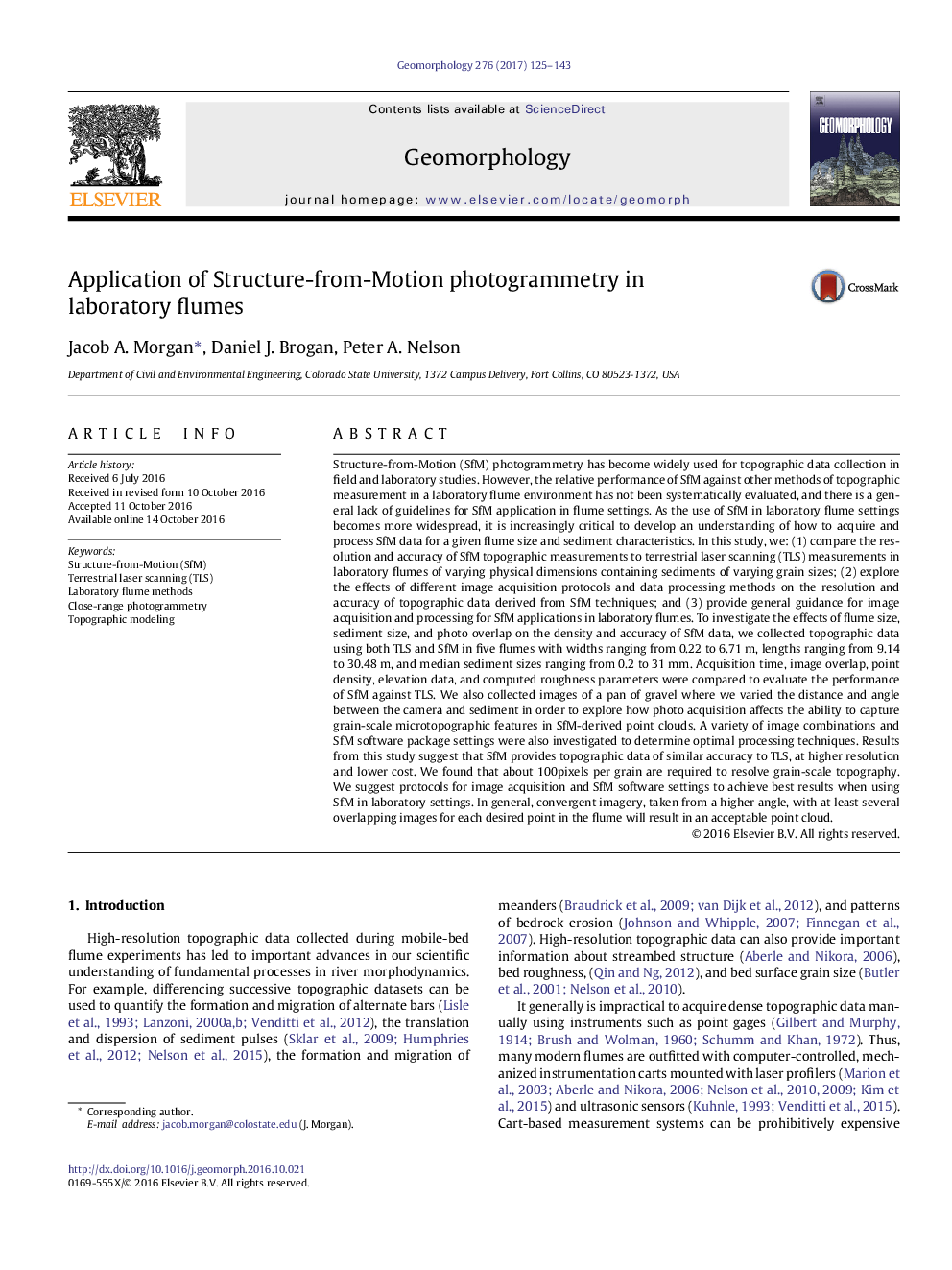| Article ID | Journal | Published Year | Pages | File Type |
|---|---|---|---|---|
| 4683848 | Geomorphology | 2017 | 19 Pages |
Structure-from-Motion (SfM) photogrammetry has become widely used for topographic data collection in field and laboratory studies. However, the relative performance of SfM against other methods of topographic measurement in a laboratory flume environment has not been systematically evaluated, and there is a general lack of guidelines for SfM application in flume settings. As the use of SfM in laboratory flume settings becomes more widespread, it is increasingly critical to develop an understanding of how to acquire and process SfM data for a given flume size and sediment characteristics. In this study, we: (1) compare the resolution and accuracy of SfM topographic measurements to terrestrial laser scanning (TLS) measurements in laboratory flumes of varying physical dimensions containing sediments of varying grain sizes; (2) explore the effects of different image acquisition protocols and data processing methods on the resolution and accuracy of topographic data derived from SfM techniques; and (3) provide general guidance for image acquisition and processing for SfM applications in laboratory flumes. To investigate the effects of flume size, sediment size, and photo overlap on the density and accuracy of SfM data, we collected topographic data using both TLS and SfM in five flumes with widths ranging from 0.22 to 6.71 m, lengths ranging from 9.14 to 30.48 m, and median sediment sizes ranging from 0.2 to 31 mm. Acquisition time, image overlap, point density, elevation data, and computed roughness parameters were compared to evaluate the performance of SfM against TLS. We also collected images of a pan of gravel where we varied the distance and angle between the camera and sediment in order to explore how photo acquisition affects the ability to capture grain-scale microtopographic features in SfM-derived point clouds. A variety of image combinations and SfM software package settings were also investigated to determine optimal processing techniques. Results from this study suggest that SfM provides topographic data of similar accuracy to TLS, at higher resolution and lower cost. We found that about 100pixels per grain are required to resolve grain-scale topography. We suggest protocols for image acquisition and SfM software settings to achieve best results when using SfM in laboratory settings. In general, convergent imagery, taken from a higher angle, with at least several overlapping images for each desired point in the flume will result in an acceptable point cloud.
